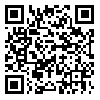Volume 20, Issue 1 (2020)
QJER 2020, 20(1): 77-51 |
Back to browse issues page
Download citation:
BibTeX | RIS | EndNote | Medlars | ProCite | Reference Manager | RefWorks
Send citation to:



BibTeX | RIS | EndNote | Medlars | ProCite | Reference Manager | RefWorks
Send citation to:
jalili P, khochiani R. Evaluating Relation between Military Expenditure and Petroleum Revenue: Wavelet Coherence Approach. QJER 2020; 20 (1) :77-51
URL: http://ecor.modares.ac.ir/article-18-26706-en.html
URL: http://ecor.modares.ac.ir/article-18-26706-en.html
1- Assistant Professor, Department of Economics, Ayatollah Borujerdi University , parviz.jalili@abru.ac.ir
2- Assistant Professor at Department of Economics, Ayatollah Borujerdi University
2- Assistant Professor at Department of Economics, Ayatollah Borujerdi University
Abstract: (4898 Views)
In the orthodox economy, domestic and foreign security is one of the tasks of the welfare state and even of the minimalist state to protect private property rights. Military expenditure dependent on the stage of economic development may affect real economic variables differently. Within four models, this study uses wavelet coherence approach to assess the relationship between public order and military expenditure with oil revenues and private investment in Iran during the period 1959-2017. The results of the first model show that at four-year and 16-year time scales during the period 1969-1978, the growth of military expenditure and the growth of oil revenues are not only the co-phase but also the growth of oil revenues is a leading variable for the growth of military expenditure. The results of second model indicate that there is a coherence between the public order expenditure growth and the oil revenues growth in four-year horizons during 1960-1978, and they are also co-phase from 1997 to 2005. At time scales up to 8 years during 1993-2008, another type of relationship is observed. These variables are co-phase, but the public order expenditure growth is not a cause of oil revenues growth. The results of the third model show that the private investment growth and the public order expenditure growth act against each other, but they are co-phase in the long-run. The results of the wavelet power spectrum also show that the greatest energy of both periods is due to public order and military expenditure growth in the pre-revolution period.
Keywords: Military expenditure share, Petroleum revenue, Economic growth, Private investment, Wavelet coherent, Iran
Article Type: Original Research |
Subject:
Economics and Econometrics
Received: 2018/11/1 | Revised: 2020/04/12 | Accepted: 2019/01/23 | Published: 2020/03/20
Received: 2018/11/1 | Revised: 2020/04/12 | Accepted: 2019/01/23 | Published: 2020/03/20
Send email to the article author
| Rights and permissions | |
 |
This work is licensed under a Creative Commons Attribution-NonCommercial 4.0 International License. |







